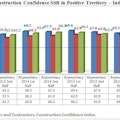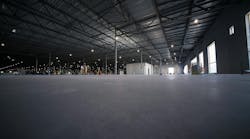The Top Customer Expectations Contractors Must Meet in 2024
The great salesman and motivational speaker Zig Ziglar once told me: “There are really only five obstacles to the sale and they don’t change. Those are: No need. No desire. No money. No hurry. No trust.”
He’s absolutely right about that, but for those of us in the home improvement industry, how we overcome those obstacles does change over time.
We have to be thinking constantly about what our customers really want. And that means asking, “What do prospects expect from me today that they didn’t three, five, and 10 years ago?”
Here are two important expectations you need to master for customers.
1. Great Digital Experiences
A survey from leading CRM Salesforce found that 75% of customers expect companies to use new technologies to create better experiences. Furthermore, 62% said their experiences with one industry influence their expectation of others.
So, what does that mean for us?
Today’s customers want greater ease and convenience than ever before. They one-swipe shop on Amazon. They use keyless check-in apps at hotels. Their banks let them track their finances, savings, and investments from anywhere, at any time. The list goes on.
75% of customers expect companies to use new technologies to create better experiences
Now, are we following that with a clunky, outdated website with poor functionality and usability? Are we showing up for demos with 6-inch wide pitchbooks instead of touchscreens and tablets? Do our presentations last an hour rather than 15 to 20 hard-working minutes?
That’s not a good look. It doesn’t instill trust and desire to buy.
What customers expect from us now is to leverage technology for a seamless experience. In other words, we need to use technology to make things as simple, convenient, and efficient for them as possible.
2. Personalized Solutions
Personalization is a key trend across most industries right now—and the home improvement sector is no exception.
A recent J.D. Power customer satisfaction study, based on the responses of 3,000 people who made home improvement purchases within the past 12 months, found that manufacturers and retailers that offer personalized experiences almost universally see higher overall satisfaction scores.
Not only that, customers are willing to invest more money when they have this type of experience.
Now you’re probably asking: What does that mean for my company? Well, there’s no one-size-fits-all solution. But we can ask: What can I do to speak directly to my customer, and speak to them in a manner where they feel that I have their best interest at heart?
That could mean different things for different businesses.
But one way to do that is to use digital tools that let customers actively participate in evaluating and making choices around products and vendors.
For instance, say you’re bidding on a kitchen remodel job. It’s helpful to use a tool that lets you create an instant 3D rendering of the space, walk customers through different options in real time, and provide cost estimates based on their choices.
About the Author

40403
Expectations for 2017 have become less optimistic, but the majority of industrial and commercial construction contractors still expect growth this year, according to the latest Associated Builders and Contractors (ABC) Construction Confidence Index (CCI). Although all three diffusion indices in the survey — profit margins, sales and staffing levels—fell by more than five points, they remain well above the threshold of 50, which signals that construction activity will continue to be one of the few significant drivers of economic growth.
The latest survey revealed that:
- The CCI for sales expectations fell from 65.1 to 59.7;
- The CCI for profit margin expectations fell from 61.1 to 56;
- The CCI for staffing levels fell from 64.9 to 59.5.
“There may be a period during which the pro-business agenda being forwarded in Washington, D.C., will significantly impact construction firm expectations,” says ABC Chief Economist Anirban Basu in a release. “In fact, many construction executives have become more confident, including those who would stand to benefit most directly from an infrastructure package. However, there is a realization among construction firms that, if implemented, many of these pro-business initiatives would begin impacting the economy beyond the six-month timeframe built into ABC’s construction confidence survey.
“Despite an ongoing dearth of public construction spending growth, certain construction segments have experienced significant expansion over time, including office, hotel, healthcare and multifamily segments,” says Basu. “This helps explain why more than 60% of respondents expect their sales to rise during early 2017 and the same number expect staffing levels to rise.
“Respondents from Florida and other rapidly growing states are reporting significant shortages of appropriately skilled workers, which is helping to drive compensation costs higher,” says Basu. “This helps explain why fewer than half (48%) of respondents now expect profit margins to climb. That is down from 54% from the previous CCI, supporting the proposition that the construction skills shortfall has worsened over the past six months.
“For now, confidence appears to be supported less by policymaking than by the ongoing momentum of the U.S. construction industry,” says Basu. “Going forward, confidence is likely to depend more intensely on the new administration’s capacity to move its pro-business agenda from theory to practice.”
The following chart reflects the distribution of responses to ABC’s most recent surveys.

